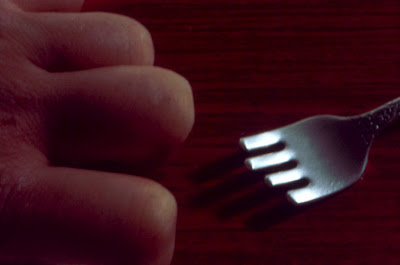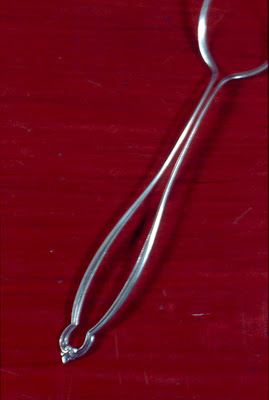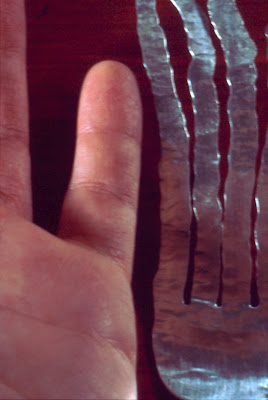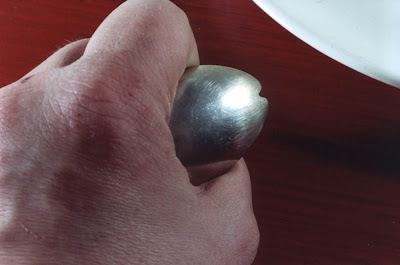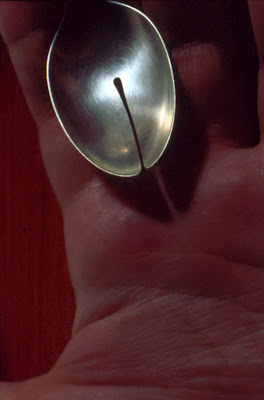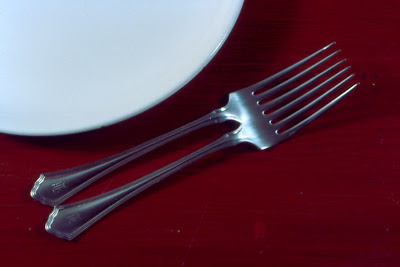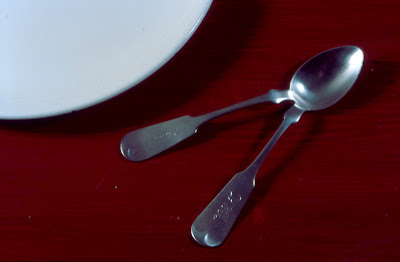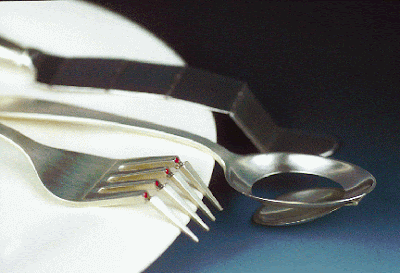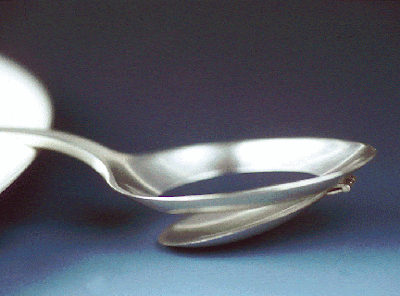Making things out of metal is my physical inquiry into the nature of human existence. I choose commonplace objects, close to home, and extra ordinary. Ubiquitous as they are, eating utensils function in the intersection between self and not self, the magical moment where matter sustains the spirit.
This inquiry starts in a place of in between-ness. Is this a whole utensil in the process of disintegration or hundreds of silver granules on the way to becoming a utensil? The issue is not of utility versus (useless) art. Rather, these objects have a clearly designed use: to encourage us to think about life.
How different are the processes of coming together and falling apart? To make these Implements, I spent 3 months learning the ancient art of granulation. Failure loomed large as my deadlines approached and only two prototypes carried potential. While inspecting my work, a visiting artist dropped both pieces and the prototypes were mangled. Instead of failure, though, this produced a breakthrough. Following a technical suggestion from the artist who “ruined” my pieces, I produced a full set in three weeks.
Rebecca Scheer, 2004
